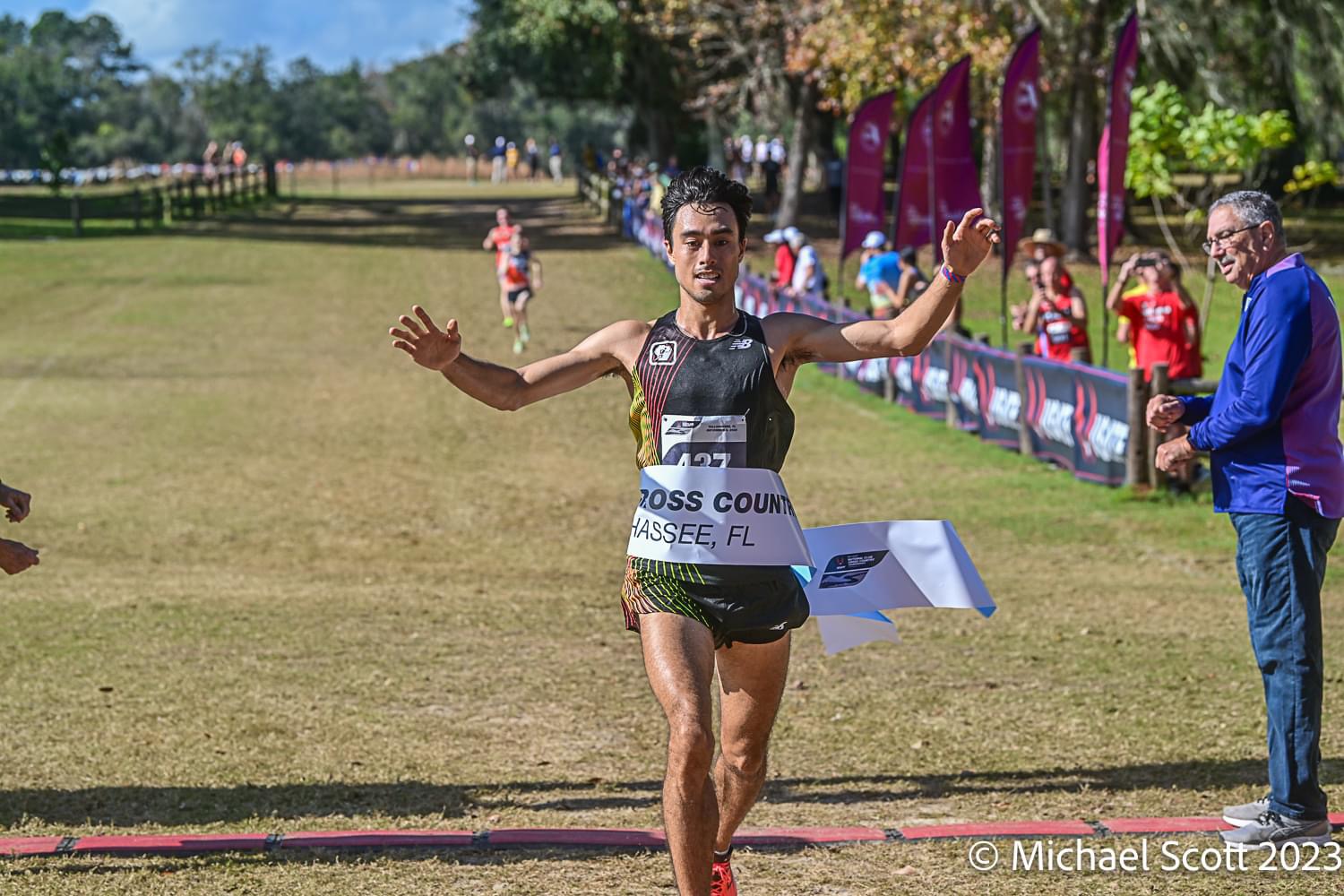
Photo: Dustin Whitlow/DWhit Photography
The cones are out. The flyers are up. Volunteers are milling around and bibs and t-shirts are in a stack, just ready to be claimed.
Is anybody going to claim them?
That’s what any race director invariably wonders when they put a first-time race on the calendar. Usually, especially in race-crazy D.C., people do show up.
Each arrived at this position for a different reason and brought a different level of experience to the role, but all agree that, in the words of one, “It’s really something to see it all come together!”
A myriad of factors affects races. Everything from training in the months prior, to sleep during the week before, to weather on race morning can make or break a runner’s experience. But among these factors, one often underappreciated but critical component is the race organization itself. Behind the scenes, as we runners stress about stretching and warming up and pre-race nutrition, a whole other set of people are tirelessly coordinating the logistics and communication for a hoard of volunteer staff to make the day a success for us.
“It is so much fun! Absolutely worthwhile,” said first-time race director Juliet Neal. Neal’s first experience was launching the Turkey Trot for Parkinson’s at Burke Lake Park last year. “Race day was fantastic. Since it’s a holiday I wanted it to be really family friendly and fun, so we did a 5k run or walk and a 1-mile ‘gobble wobble’ if people wanted to walk and push their joggers.”
The race was so successful she had to turn people away.
“We didn’t anticipate having that many people, but hopefully this year we’ll find a venue that is still family friendly but can accommodate more people,” she said. She is already planning the 2016 event, scouting out courses.
Neal’s motivation was two-fold: to provide a fun race for her community that was close enough to home so that families could easily participate and not miss out on Thanksgiving festivities, and more importantly, to raise money for a cause she is passionate about. Neal’s brother-in-law, who lives in Boston, learned he had Parkinson’s a little over a year ago.
“There’s not much I can do to support their family when they’re far away,” she explained. “So this is my way of supporting them.”
Selflessness, whether that’s fundraising for a cause, supporting a local institution, or donating time and energy back to the running community itself, is a strong motivator for race directors.
Much like Neal, Judith Goodstein also came to the race director position to support a cause. A long-time runner, Goodstein volunteered to organize a run for her son’s school.
“Running friends have always been my best friends, so putting on a running event was a natural way for me to volunteer.”
And also like Neal, I could feel her passion and enthusiasm for her race coming through the phone. “It was far more challenging than I expected just because I didn’t know all the things I needed to do, but in the end it was really fun! Everyone was cheering, the principal came and handed out medals and everyone had a great time!”
A third local race director, Karen Kincer, has now been directing races for seven years. The past Montgomery County Road Runners Club president recalls her first time directing an event, the Jingle Bell 8k, when another director retired and asked her to step up. “Eventually when you take part in the sport enough, especially when you’re out of college and all that, it becomes evident that this sport is in great part run by volunteers.” As a long time runner, she started volunteering by initially handing out cups at a water stop to eventually directing race events. For Kincer, race directing was “the right thing to do, to give something back.”
Though ultimately rewarding, directing a race is not all smiling runners and smooth sailing. “I had no idea what I was in for,” laughed Goodstein. “I said I’d do it in October, we had one meeting, then I did a whole lot of nothing for most of winter.” She realized late in the game that there were many, many bits and pieces to bring together—race bibs, insurance certificates, trash collection, t-shirts, safety pins—“for the last few weeks there was a lot of scrambling since a lot of the stuff needed to be done weeks ahead of time, and I just didn’t know!”
In preparation for next year’s event, Goodstein “wrote it up at the end so we’ have documentation. And as I wrote it up, I thought, it’s really not so bad! Successfully directing a race is just knowing what needs to be done.” She talked about getting the big things out of the way earlier and involving more volunteers in the process to prevent so much last minute confusion.
While Goodstein wished she’d just Googled “how to put on a 5k,” Neal was fortunate enough to have supportive ties in the running community to get her started on her way. As a coach for Road Runner’s Club of America, she took an online race director certification course to get her started. She worked closely with Metro Run and Walk, which puts on running events in the area, and relied on them for finding a timing company, registration system, and ordering t-shirts. “Those things are a ton of work if you don’t already have that set up!”
Because she wanted to support a cause, Neal called Team Foxx, a Parkinson’s research charity she’d raised money for while running her 11th Marine Corps Marathon. “It’s really easy,” she said. “You pretty much just call them up and tell them you want to raise money. Then they were really supportive, sending things like water and fliers and helping with how to make donations.”
Like Neal, Kincer had a strong support network to help her on her way to becoming a race director. For her first race she had a “headstart” because someone was closely advising her who had done it before. Now, after seven years of directing races, Kincer often mentors new race directors. “It’s helpful to have someone to show you the ropes a bit,” she explains. “For me it wasn’t too bad because I had enough people in the club who I could go to to ask questions.”
While the directors themselves are often volunteers, they also take on the huge responsibility of coordinating the many volunteers required to make a race successful. Among all three, the lesson of effective volunteer coordination is a common theme.
Kincer stresses that “Volunteer labor is a wonderful, wonderful thing and they make this sport happen. But they can cause some kinks too. When you’re coordinating a couple hundred volunteers, someone is going to fall down, not going to show up, whatever it might be. So you have to be prepared.” She advises that a race director’s biggest job is to delegate and encourages new race directors to surround themselves with good people. “You should have nothing to do yourself by race morning. You’re there to help your people and put out fires if they should arrive.”
Reflecting on her first race directing experience, Neal echoed Kincer’s advice. “You need to get some key people to help you—like a board or race committee—even
if it’s just you and your best friend or your spouse.” She relied on her running group to try out potential routes, and acknowledged that she “probably needed more people” to delegate some of the work.
Perhaps the most important part of the race director’s role is ensuring the experience is good for those participating. “You have to put yourself into the shoes of a runner,” advises Kincer. “Imagine yourself as a runner coming to a race and envision everything you see. For example, they get out of their car, and do they know which way to go? You need good communication beforehand, but a lot of that goes out of runners’ heads on race morning so it’s up to the race director to anticipate what they’re going to need.”
For Goodstein’s target audience, kids and friends of Hearst Elementary School, she has slightly different priorities to think about. “I think next year we’ll have a shorter run for pre-K and kindergarten, since more kids will probably do it if they only have to run a mile.” She told the story of a pre-K boy who ran the whole thing, in comparison to her son who, “like a lion,” sprints then stops and preferred to cheer from the sidelines than participate in his mom’s race.
Neal is looking forward to her 2016 Turkey Trot, because this year her brother-in-law, her fundraising inspiration from the start, will actually be able to attend. Goodstein schemes how to expand participation by getting the word out in advance as well as including a 1-mile run for the younger children. And Kincer, after directing many races, looks forward to putting on the inaugural Suds and Soles 5k in Rockville, Md. this June and “making it a good experience so that people want to come back the next year and bring a friend!”
As D.C. area runners look forward to the summer and fall racing seasons, these three race directors remind us to appreciate the behind-the-scenes organization a good race requires and the volunteers that make our running possible, and maybe even inspire us to take a race off running-wise and consider contributing our time and volunteer energies instead.
Recent Stories
Looking for our race calendar? Click here Submit races here or shop local for running gear
James W. Foley Freedom Run
Inspired by the moral courage of freelance journalist James Foley, the mission of the nonprofit Foley Foundation is to secure the freedom of Americans held captive abroad unjustly by terrorist organizations or rogue states, and to promote journalist safety.
The
Kensington 8K Race
Since 1994, the Kensington 8K Race has been a favorite DC area fall race – a fun, fast event with beauty, challenge, and excitement. Run it this year on Saturday, September 21, 2024!
The 8K distance is $39, with a






